Friday 24th April - Shoulder Stretches, Delightful Dandelions and Peaceful Ponies
This Week's Class Notes... Some Simple Shoulder Stretches for Working at Home
I know that many people are working from home at the moment, sitting in front of laptop computers at kitchen tables for long hours. In this short video I'm sharing some simple stretches that you can do seated in your chair (make sure it's a sturdy one with a good back to it rather than an office chair on wheels). You can do the stretches at intervals throughout the day to help release tight muscles and encourage better breathing. I hope they help, and please share with anyone you know who might need them...
This Week's Recipes...Courgette, Petits Pois and Mint Velouté and Vegan Red Lentil Cottage Pie
Courgette, Petits Pois and Mint Velouté
This recipe sounds very posh and I had to do a bit of research to find out what 'velouté' means. It's a French word that means 'velvety' and, traditionally, the soup should be made with a roux sauce to make it thick and creamy. This recipe uses milk rather than the roux sauce and really it's just a puree'd soup but it's tasty, super-easy and it just sounds good to say it in a French accent!
You will need:
2 tablespoons olive oil
1 onion, sliced
1 large potato, peeled and diced
2 large courgettes, diced
200g fresh or frozen petits pois
250ml vegetable stock
250ml soya milk
a handful of chopped fresh mint
salt and pepper as required
And here's how to make it:
Heat the olive oil in a large saucepan. Add the onion, potato and courgettes and sauté gently. Add the petits pois, the stock and the milk. Cook for 30 minutes. Remove from the heat, add the mint and whizz it all up in a blender. Season to taste and serve. Simples! :-)
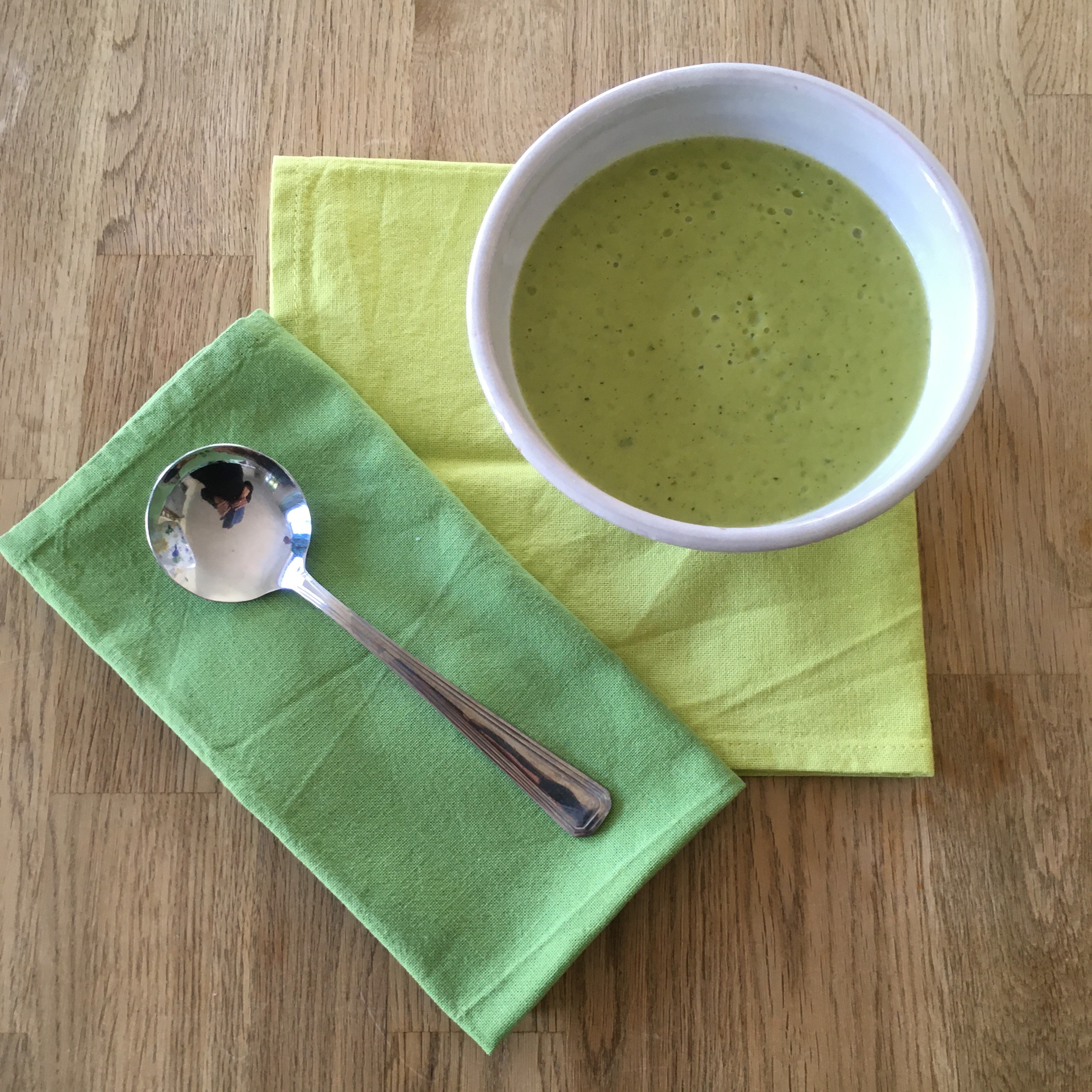
Red Lentil Cottage Pie
This is a great recipe for a delicious, filling and easy vegan supper. It comes from the National Trust Cookbook by Clive Goudercourt but I adapted it to use fresh mushrooms instead of the dried ones. It has a long list of ingredients but don't let that put you off - it's not difficult and, once you've got everything together, it's quick to make too.
You will need:
10g (1/4oz) dried mixed mushrooms (I used a good handful of fresh ones instead - we love mushrooms in our house)
125ml boiling water if you're using the dried mushrooms
1 tablespoon of olive oil
150g (9oz) onion, chopped
2 garlic cloves, finely chopped
1 bay leaf
1 teaspoon ground coriander
1/4 teaspoon ground cinnamon
250g/9oz red lentils, rinsed and drained
4 teaspoons pesto
400g carton chopped tomatoes
450ml/3/4 pint vegetable stock
150ml/1/4 pint red wine
175g/6oz carrots, diced
115g (4oz) swede, diced
Salt and freshly ground black pepper
85g (3oz) spinach
Topping:
850g (1lb 14oz) potatoes, scrubbed and cut into chunks
2-3 tablespoons of soya milk, or other milk
55g (2oz) soya margarine
And here's how to make it:
If you're using them, add the dried mushrooms to a bowl, pour over the boiling water and leave to soak for 15 minutes.
Heat the oil in a medium saucepan, add the onion, garlic, bay leaf, ground coriander and cinnamon and fry gently for 10 minutes, stirring until softened. If you're using fresh mushrooms add them here.
If you're using the dried mushrooms, lift them out of the water and chop, then add them plus the soaking liquid to the onion with the lentils, pesto and tomatoes. Pour in the stock and wine then add the carrots and swede. Season with salt and pepper and bring to the boil, stirring. Cover and simmer for 25-30 minutes, stirring from time to time until the lentils are soft and have absorbed most of the liquid.
Meanwhile, add the potatoes to a saucepan of boiling water and cook for 15-20 minutes or until soft. Drain and mash with the milk and half the margarine. Season with salt and pepper.
Preheat the oven to 190C/375F/gas mark 5. Add the spinach to the lentils and cook for 1 minute until just wilted. Spoon the lentil mix into the base of either four individual oven-proof dishes or one large 2 pint dish. Top with the mashed potato and rough up with a fork. Melt the remaining butter and brush over the mash. Bake the pies for 20 minutes if individual or 40 minutes if one large one, until golden brown and piping hot.
Serve with roasted root vegetables - and I added some lovely steamed cabbage too.
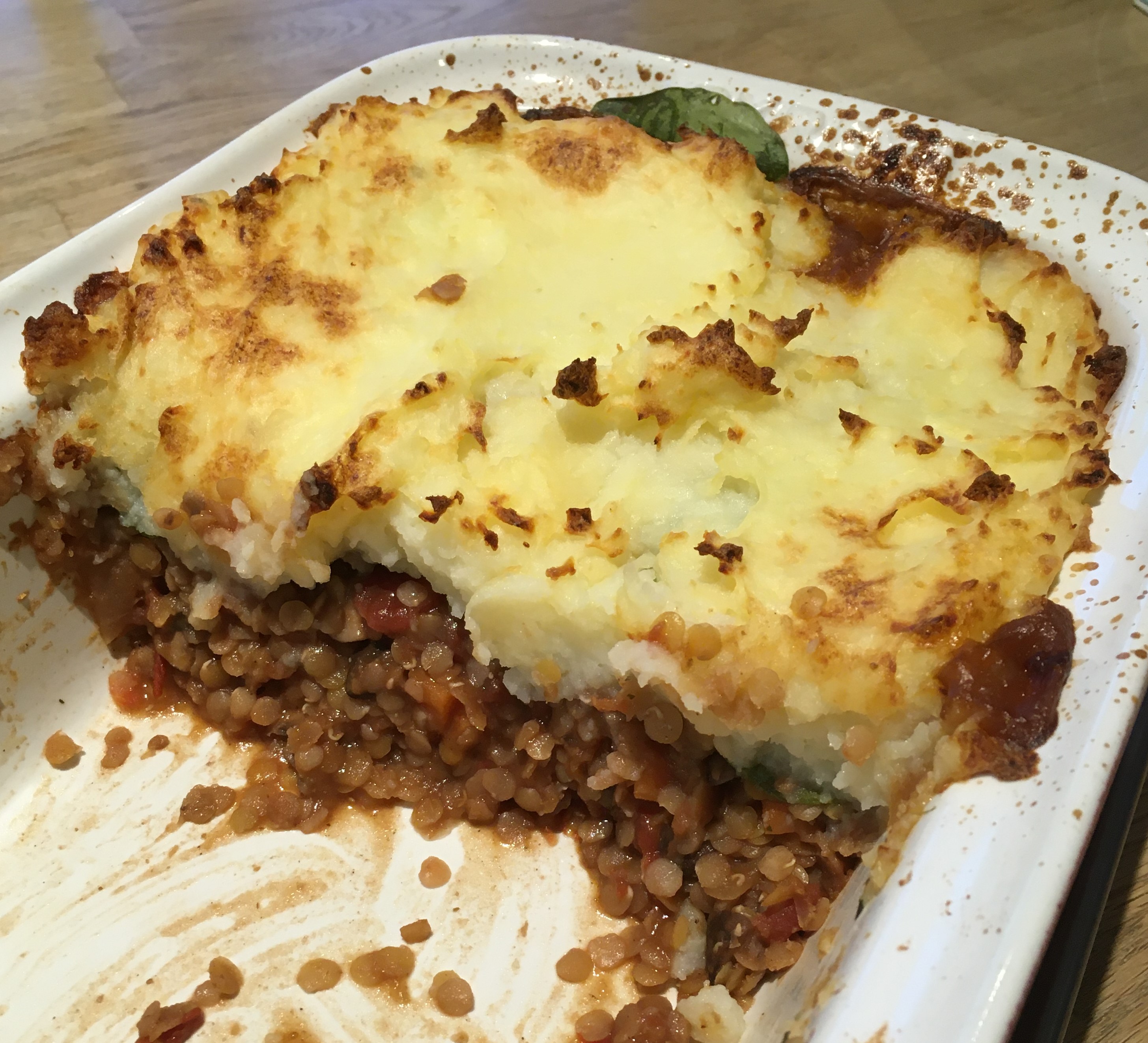
This Week's Mother Nature's Magic... Dandelions - and More Houseplants
As I mentioned in the Blog last week, Wednesday 22nd April was Earth Day. Earthday.org have a great website which show us how we can get active to protect our planet but there are lots of simple things that you, even in the middle of lockdown, can do right now to make a difference. As the weather is so lovely and those of us who are fortunate enough to have our own gardens are spending so much more time outside, one of the most beneficial things you can do for the creatures that live in or visit your garden, as well as for yourself, is to pledge not to use pesticides.
Since the end of World War II the use of pesticides has grown exponentially. They were easy to manufacture, cheap and effective at killing insects which therefore led to greater crop yields. It all sounded great and their use quickly spread around the globe and pesticide companies became enormously rich. Then, of course, people began to realise that the use of pesticides produced side-effects - fish were poisoned, birds died and the effects on human health were noticed. As early as 1962, when a scientist called Rachel Carson wrote a best-selling book called 'Silent Spring' and the environmental movement was born, we have been warned about the damage that pesticides do to the entire foodchain, the decline of many species. and the contamination of both soil and water. Some success has been achieved in highlighting the problems with our dependence on these toxic substances, with many pesticides being removed from the shelves of our garden centres over the last few years, but many are still used and new ones are being developed which will, undoubtedly, create their own problems. So, what can we as individuals do about this? What can we do that will bring our gardens, the land that our food is grown on, and therefore our own bodies, back to health? There is one simple thing that you can do right now - pledge to never use pesticides or any form of insecticide in your garden again. Go through your shed or garage shelves and collect up all the bottles of poison, put them in a box and store them safely and securely until the local tip/recycling centre re-opens, and then take them there for safe disposal. If we stop buying these products then the garden centres will stop stocking them and manufacturers will get the message that they are not wanted any more.
But what about bugs on the plants in your garden? Let Mother Nature do the work. Once the balance is restored and wildlife returns to your garden they will eat the troublesome insects for you. The blue tits, ladybirds and lacewings will eat the aphids and, if you're desperate, you can spray washing up water over the most affected stems as the bubbles will smother then but not poison the surrounding soil or other insects. Snail and slugs that aren't eaten by thrushes and hedgehogs (I have to admit you'd be lucky to have these two visitors in your garden nowadays) can be removed by hand (I repatriate molluscs to suitable places I come across on my dog walks) and, when you plant up your garden, expect a few casualties and that you'll lose some to infestations and accept that this will be helping to feed other animals in the foodchain. If you'd like to learn more about the worms, bees, flies, woodlice, butterflies and other creatures that live in your garden, I recommend reading The Garden Jungle by Dave Goulson. I listended to it as an audio book read by the author and it was very entertaining if a little sobering to learn just how much damage us humans are doing.
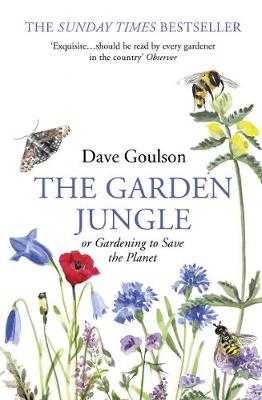
Dandelions are at their peak at the moment. I have had a lovely line of them along the gutter and kerb just outside my house. The council usually come along with a spray to kill them but that's obviously low on the Council's priority list right now and they have been flourishing. Pollinating insects just love dandelions and there have been a host of happy bees enjoying them. I just hope that, when current restrictions are lifted, the Council decides that weedkillers are not a good way to spend their budget and they give up spraying for good.
Dandelions are a much maligned wildflower (a weed is just a wildflower in the wrong place) that we have been conditioned to dislike, but throughout the centuries they have been valued for their range of medicinal properties. Full of vitamins, minerals and fibre, dandelions leaves can be eaten raw in salads, and the root can be dried for use in tea. They are thought to have immune-boosting properties, are full of anti-oxidants, and are known to be a mild diuretic. More research is being done into many other claims about its benefits. On top of all that potential and goodness, the humble dandelion is beautiful. It is so common, and we are of course conditioned to think of it as a weed, that we overlook it, never stopping to study it in greater detail. So, as you step outside tomorrow find yourself a dandelion and get down on the ground for a good look. It is delicate and intricate and such a deep rich yellow - you might find you change your opinion of it and maybe let a few of them live in your garden for both you and the insects to enjoy.
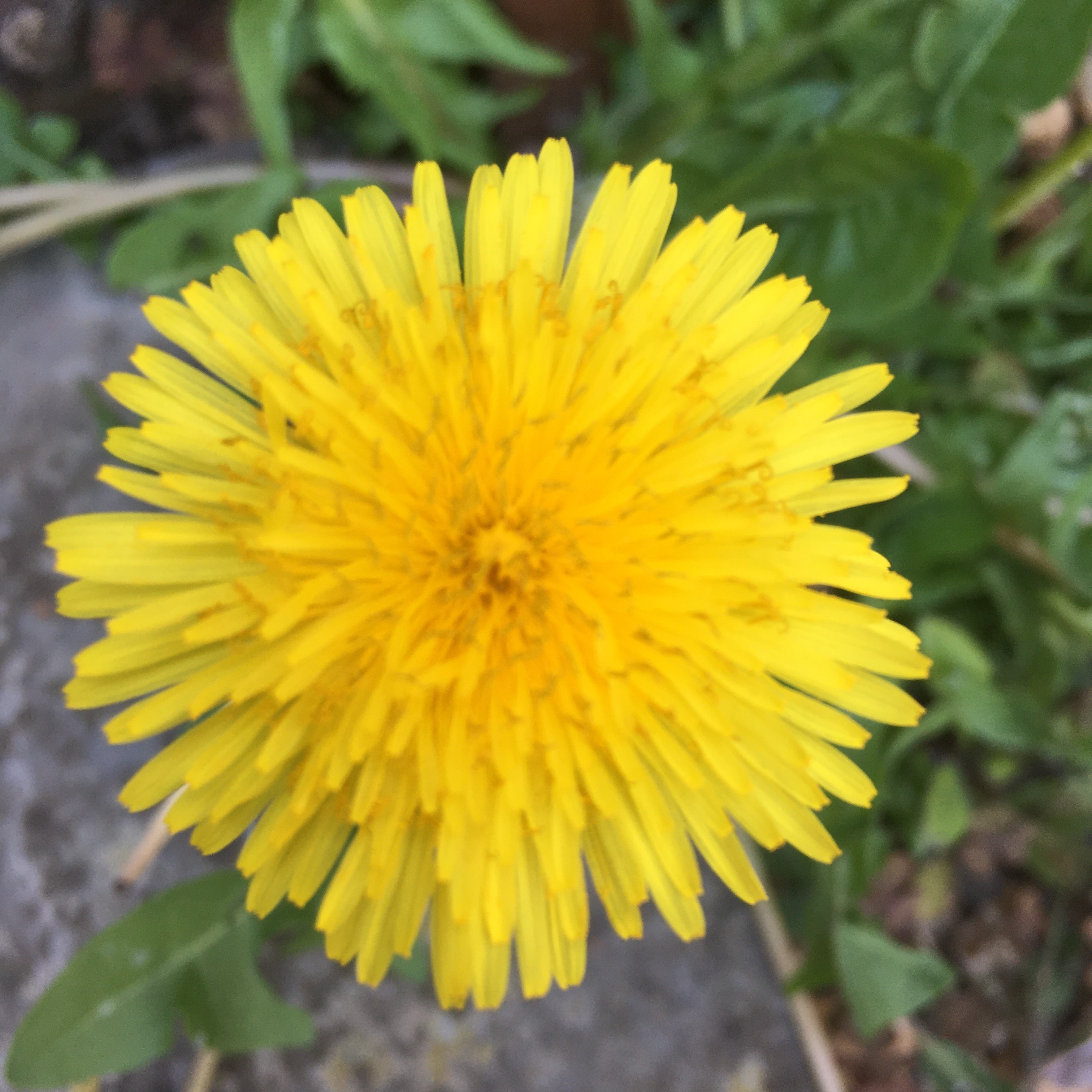 A dandelion in my garden
A dandelion in my garden
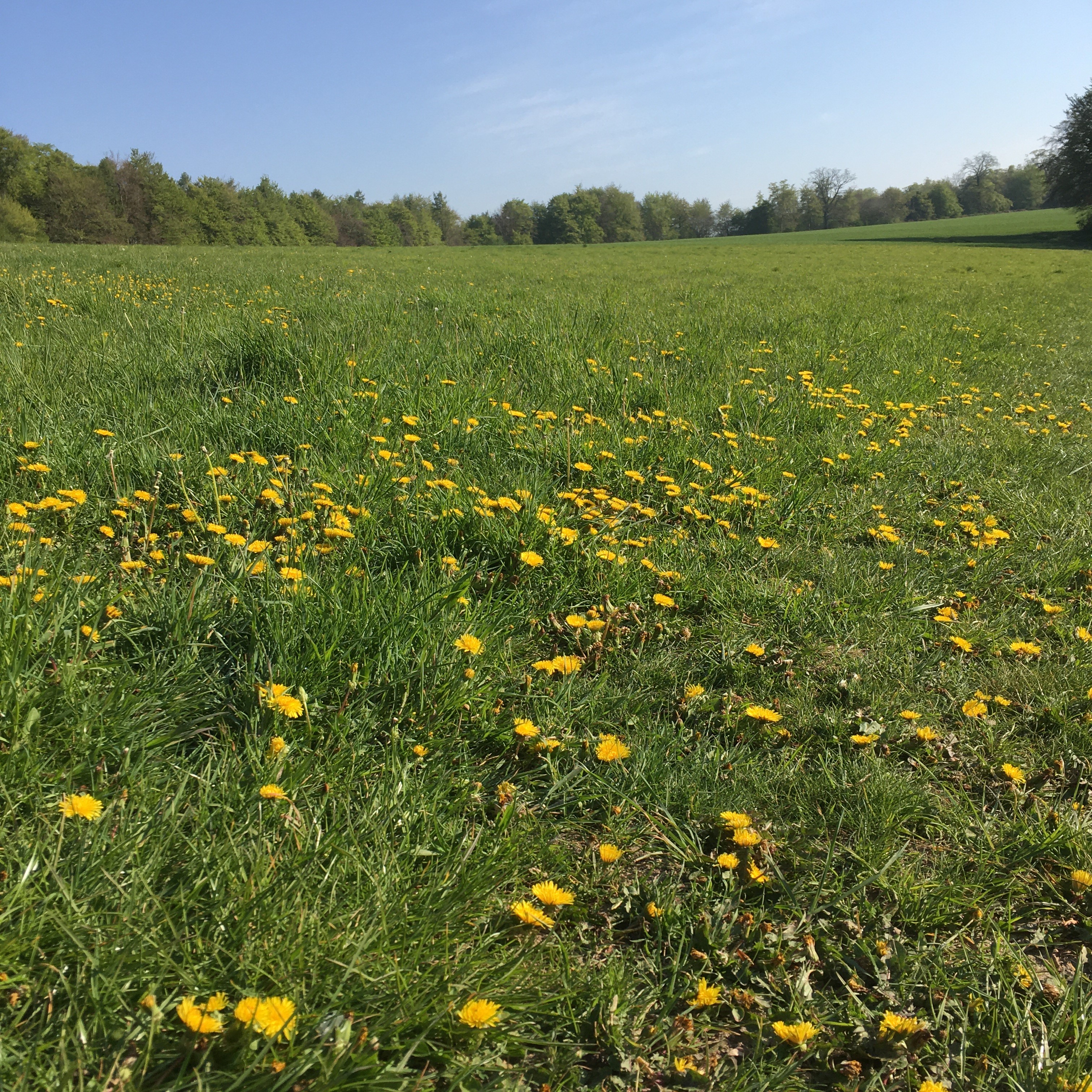 A field full of dandelions on my run yesterday morning
A field full of dandelions on my run yesterday morning
 The beautiful patterns of dandelion clocks (not my photo - but don't know who to credit)
The beautiful patterns of dandelion clocks (not my photo - but don't know who to credit)
Continuing the journey around my house to show you my ever-growing collection of houseplants, here are some of the ones that live in my office...
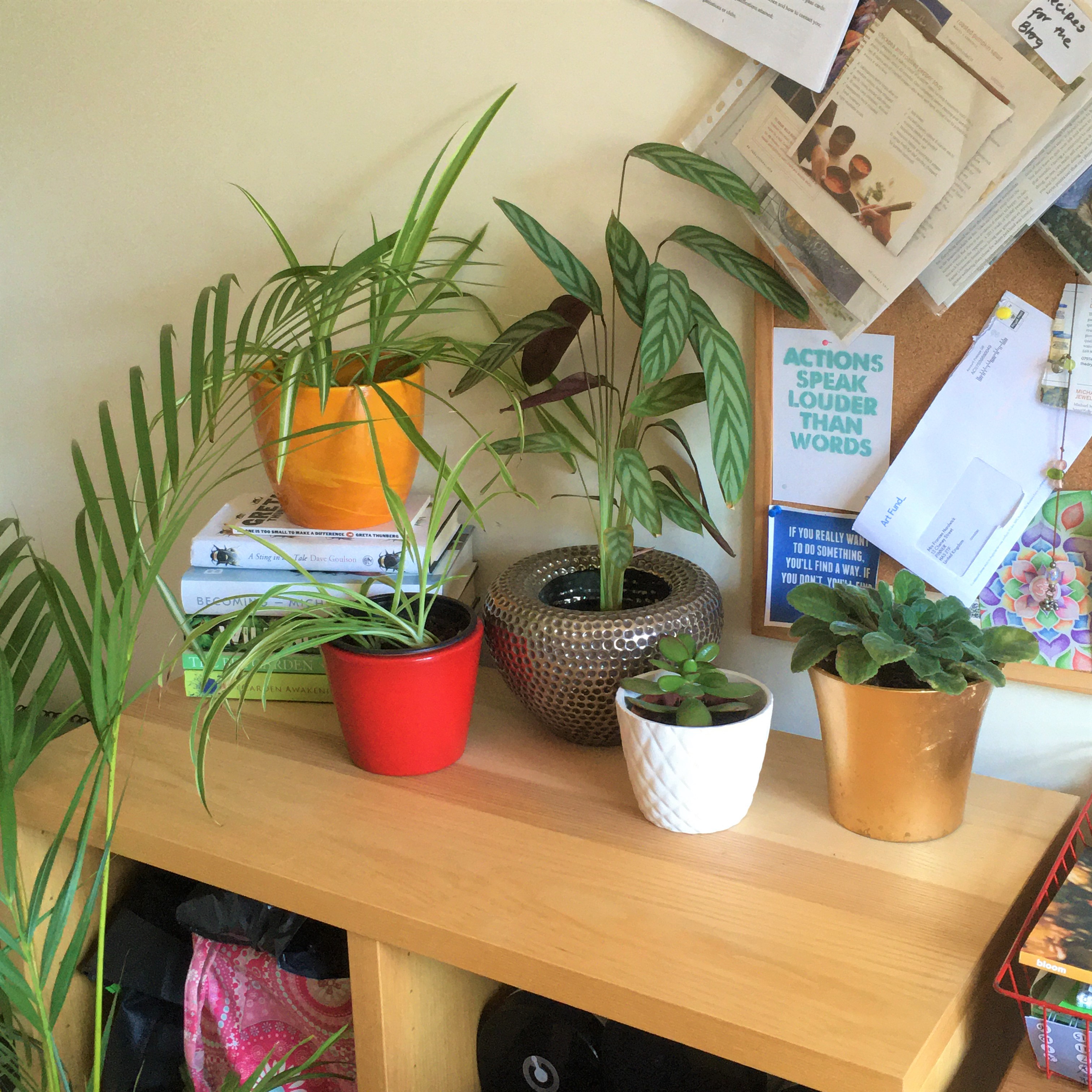 Some propagations taken from the living room plants plus, on the right, a very elderly but still flowering, African violet (Saintpaulia)
Some propagations taken from the living room plants plus, on the right, a very elderly but still flowering, African violet (Saintpaulia)
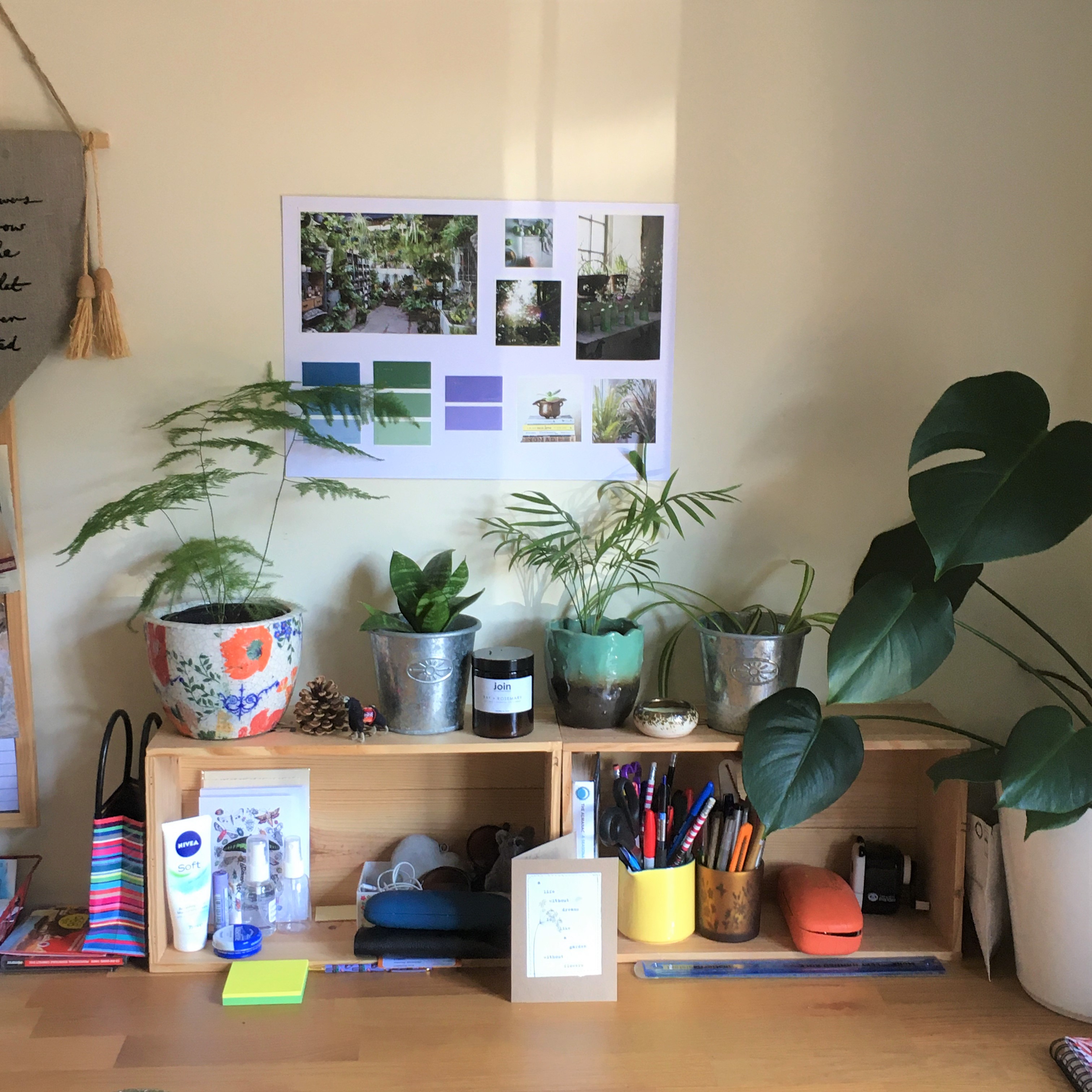
More propagations on my desk (I can't stop!!) plus, on the right a Swiss Cheese plant (which has the wonderful name of Monstera deliciosa)
This Week's Musical Offering... Sweet Lullaby by Deep Forest and Blank & Jones (Relax Mix)
Contrary to the title, this is not a gentle, quiet track to relax to but has a steady, energising rhythm which would be good to accompany your Sun Salutations or a standing pose flow...
This Week's Video...Peaceful Ponies
If you've been reading my blog for a long time you might remember my '52@50', where I tried 52 new things to celebrate my 50th birthday. Number 14 of the 52 things was to visit Mane Chance Sanctuary in Compton, just south of Guildford in Surrey, for a special day learning about The Trust Technique. You can see my Blog post (which is dated October 2016 - seriously...where does the time go?) here if you're interested to read about what it involved but, very briefly, The Trust Technique is an educational organisation that highlights the value of trust between animals and people. They use mindfulness and meditation techniques to decrease anxiety in both the animals and the humans and resolve behavioural issues that can so often be caused by lack of understanding - especially as humans so often want to dominate other species.
Mane Chance Sanctuary was founded by actress Jenny Seagrove in 2011. It consists of 67 acres of pasture for horses and ponies, many of whom have been abused, to live out their days in peaceful and caring surroundings. Mane Chance has an active volunteering and fundraising community, with Open Days, presentations and talks, young people's support sessions, work experience and Duke of Edinburgh Award opportunities too. They also offer this special bit of loveliness - created for use in this current situation when no visits are allowed. On their website, under the 'Our Community' tab, is a section called 'Quiet Space' where you will find a number of videos of the horses grazing. Some have a guided meditation narrated by Jenny Seagrove and others are just simply short films of the horses in their peaceful surroundings. They aim to offer a brief respite from all the anxiety surrounding Coronavirus - a place to breathe and relax. Here's one for you to look at now and, if you like it you can see more HERE. Please share this with any animal lovers you know who are struggling with anxiety at the moment and might benefit from a little equine tranquility.
Stay safe and, as always, thanks for reading. Until next week...






